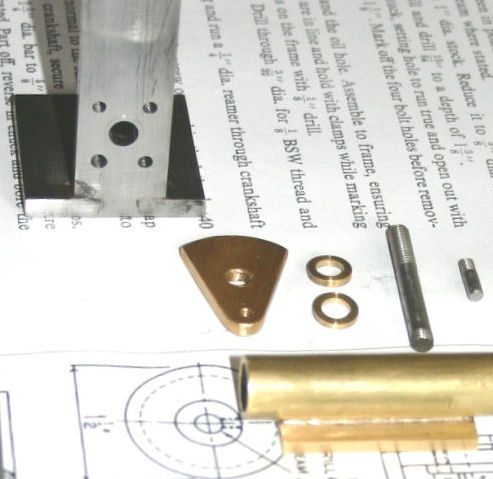Hi Terry, I know exactly what you mean about cutting dovetails ;>

)
Having cut more than my fair share of them for various jobs, I personally just find them a total PITA to mark out and cut compared to a general 90 deg joint.
Visible dovetails on a drawer joint is one thing, hidden dovetailed swaged joints in a clock frame just seems a touch of overkill to me if I’m honest.
I would say one exception to this, would be where the clock frame itself is being used to hang the assembly on a wall, and then have to support a couple of 5+ kilo lead weights too, dovetails would probably then add more strength to the frame to help stop it twisting.
These days I look for the easier option than making work for myself,
especially when the joint isn’t going to be seen, plus the time saved
gives me more time for a coffee break skive!
Just my own opinion of course, others may feel differently.
Hi Ian, in my experience, drilling holes to stop cracks doesn’t always work, as quite often the crack will simply propogate in other directions from the hole.
It ‘may’ be ok as a stop gap measure under certain circumstances, but it’s little more than a temporary cost cutting bodge in reality.
I’m well used to seeing holes drilled and patched on the alloy panels of club aircraft, but such repairs have as a rule, generally been confined to non critical areas, I shudder to think of any such repairs than may have been done (it’ll get it to its next CofA etc) that aren’t visible on a ‘walk round’!
Such a ‘mod’ even with an added patch doesn’t restore the original integrity of the structure which has suffered the crack, and it doesn’t rectify what caused the crack in the first place, and can in fact cause further problems, because a rivetted patch can cause an affected area to be too rigid locally when it should have some flexibility, and will then actually flex around the rivets!!
As an added angst, you then have further distortion and self inflicted ‘stress raisers’ generated in the structure from patching such a fracture, caused by the simple act of drilling and riveting the piece, but this is taking us well away from Clive’s original question now.
At the end of the day, Any material which has cracked, whether from reversals or vibration, has suffered catastophic structural failure due to exceeding its original design limits and is of no further use for its intended purpose, which brings us back to Clive’s clock frame as a case in point, where bending the steel cold, caused the inherant limit of elasticity of the steel he was using to be exceeded, and it snapped.
As John1 stated early on Clive, if you’re still running with the original bent steel version of the frame, get your blowlamp out and heat it up – before, during and after the bending routine!
Wishing Everyone a Happy Christmas and a Wonderful New Year.
John
.
Clive Cassel.


 )
) 



